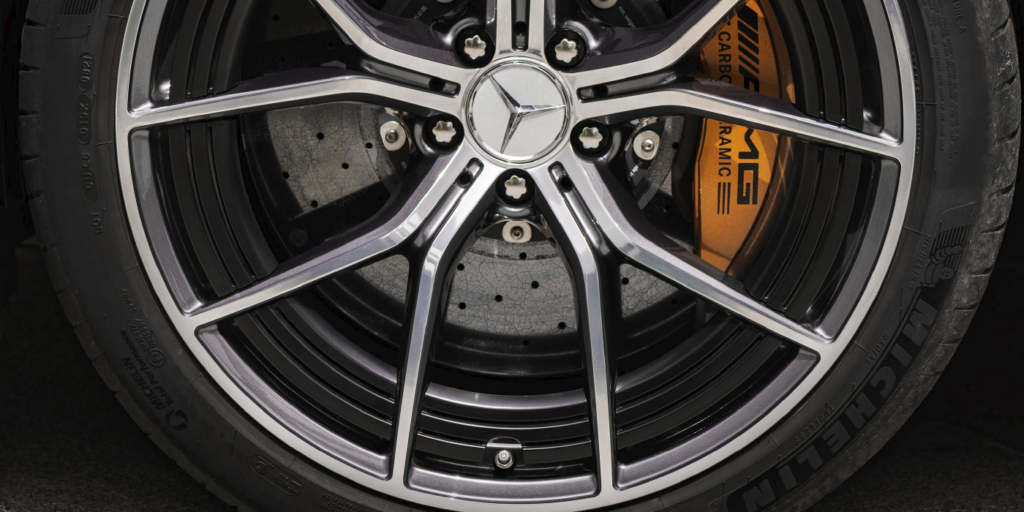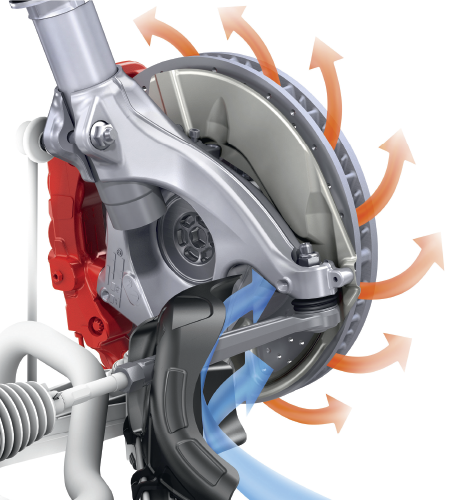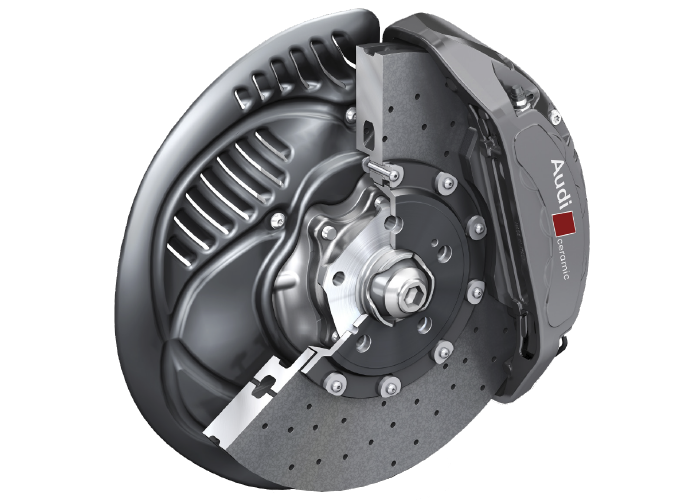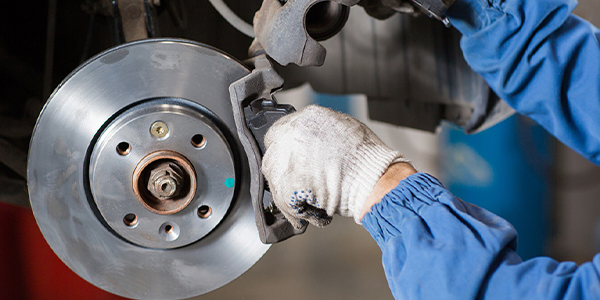What if I told you the brakes on your next car would never fade, improve your gas mileage and last 150,000 miles? You might think I was full of it or on drugs. But ceramic-composite or carbon-ceramic brake rotors and pads are real and offer these advantages. They might increase the price of a Porsche or BMW vehicle by $9,000-$15,000 though.
Ceramic or carbon-fiber composite rotors are extremely durable. In fact, manufacturers claim that they’ll never need replacement – at least with “normal” driving. They’re also resistant to the kind of distortions and wear that lead to pedal pulsation – merely an annoyance in the “real world,” but a noticeable performance issue on the track.
The brake discs are formed from a specially treated carbon-fiber compound that is silicated in a high-vacuum process at higher temperatures than any stop could produce. Not only are the resulting discs much harder than standard discs, but they are also more resistant to heat. The process used to produce the discs is complex, time-consuming and costly when compared to cast iron.
The carbon fibers are blended with a resin of carbon and silicon. The mixture is pressed into a mold to create the basic disc shape, including its internal cooling vents. Using heat up to 3,000º F, the resin is converted to silicon carbide, a material nearly as hard as a diamond. This is the “ceramic” in “carbon-ceramic.” If you tried to machine these rotors, you would need diamond-tipped bits in your brake lathe.about:blank
The low thermal expansion of the brake discs prevents deformation under heavy braking. Furthermore, the ceramic brake discs are resistant to corrosion and offer more favorable noise-damping properties.
ADVANTAGES
Because of their exceptional performance in extreme conditions, ceramic-composite brakes were developed for use in high-level motorsports competition. Porsche was the first automaker to apply them for road use, with Porsche Ceramic Composite Brakes included as standard equipment on the Porsche GT2 and Carrera GT, and as an option on most other models.
Ceramic-composite brake discs provide a 50% weight savings compared to conventional metal discs. This reduces unsprung weight, enhances shock absorber response and vehicle handling, improves fuel efficiency and contributes to reduced emissions.
Ceramic-composite brake discs have an extremely hard surface that provides consistent frictional values throughout the deceleration process, even in braking from extremely high speeds and at high operating temperatures, such as those generated from repeated braking.
But the system also provides benefits in low-speed situations. In an emergency stop, the technology does not require heavy pedal forces or outside technological boosting assistance to achieve maximum and immediate stopping force.
With cross-drilled discs and pads that are resistant to water absorption, the ceramic-composite brakes provide a superior response in wet conditions, as well as dry. Because of their hard surface and immunity to salt corrosion, Porsche Ceramic Composite Brakes have an extremely long operating life.
SERVICE LIFE
Ceramic Composite Brakes have been on the market for almost 15 years, with no recalls or lawsuits. With some complaints on low speed noise, OEMs recommend the rotors need to be warmed up. The only real complaints with the ceramic disc have come from weekend racers who experienced cracked discs due to extreme abuse. For some systems, the replacement costs of four discs and pads may reach more than $20,000, prompting many users to switch back to cast-iron rotors and semi-metallic brake pads.
The future of carbon-ceramic brakes is bright for electric vehicles. Unplugged Performance recently introduced a kit to retrofit carbon-ceramic rotors for Tesla cars. The makers claim the kit can improve range and remove 20 lbs. of unsprung weight from the vehicle. Porsche has given the Taycan hybrid large carbon-ceramic brakes.
The biggest hurdle for carbon-ceramic brakes to overcome is the time and energy required to manufacture a rotor. One manufacturer said it can take up to 20 days from start to finish. The reason for the lengthy process is that the fiber and resin need time, pressure and heat to cure. Once these challenges are solved, carbon-ceramic rotors will be as common as steel rotors.
















